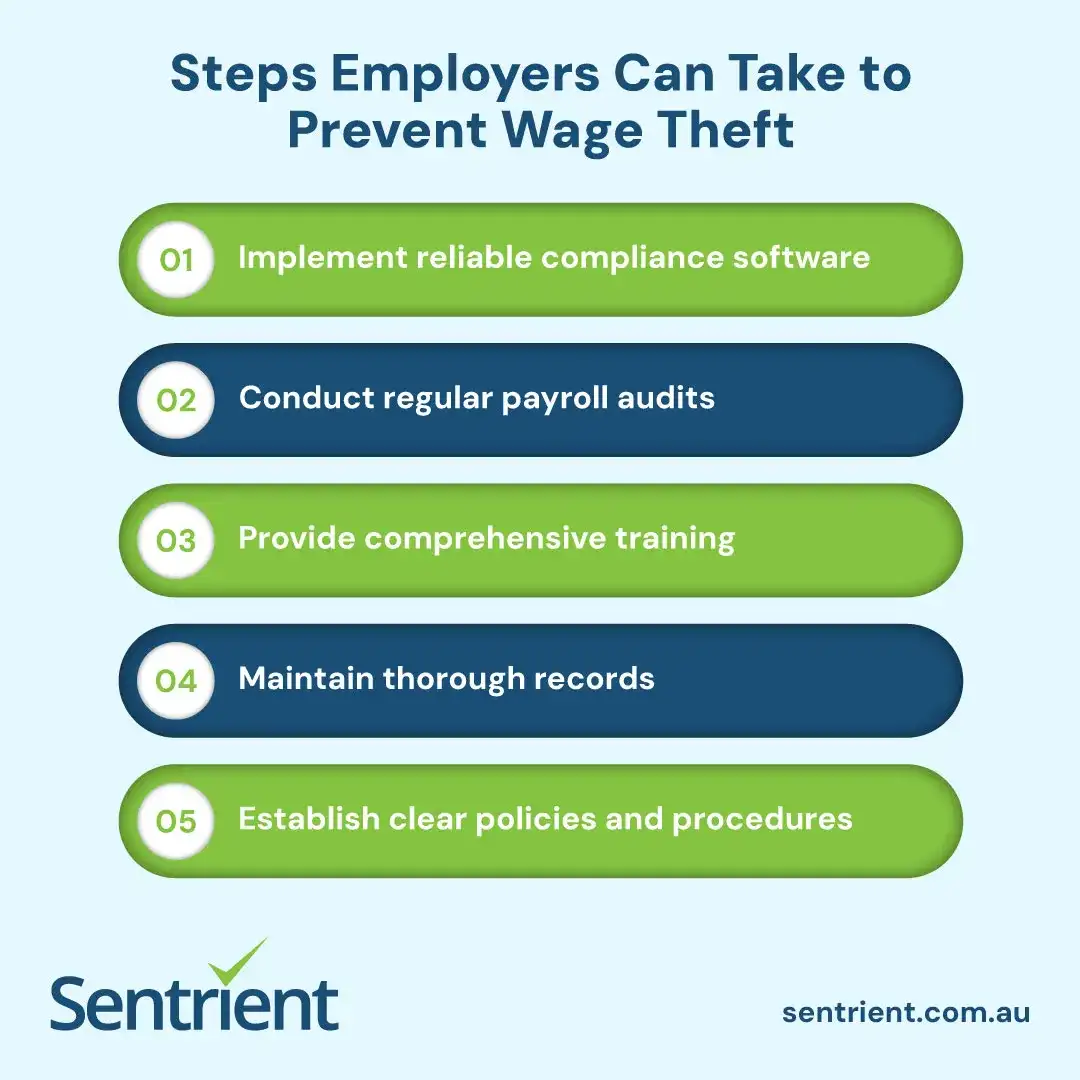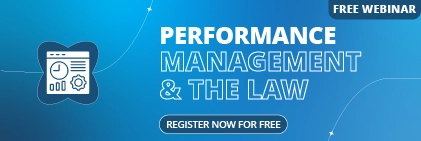Wage theft remains a significant challenge across Australian workplaces, affecting thousands of workers who may not even realise they’re being underpaid. From missing superannuation contributions to unpaid overtime, wage theft takes many forms and impacts businesses of all sizes.
For employers, understanding compliance obligations is essential not just for legal reasons, but for maintaining workforce trust and avoiding potentially devastating penalties. Recent high-profile cases demonstrate that even large organisations with dedicated HR teams can fall foul of workplace laws.
This guide examines the common pitfalls of wage theft and provides practical solutions to help Australian businesses maintain compliance and protect their employees’ entitlements.
What is wage theft and how widespread is it in Australia?
Wage theft occurs when employers fail to provide employees with their full legal entitlements. It affects workers across industries, whether intentionally or by accident.
Recent investigations by the Fair Work Ombudsman found that industries such as hospitality, retail, and agriculture report the highest incidents of underpayment. Even professional services firms have been caught out by complex award interpretations.
The financial impact is substantial with studies estimating Australian workers lose over AUD 1.35 billion annually in unpaid wages and superannuation.
Common forms include:
- Underpayment of award or minimum wages
- Unpaid overtime or work outside rostered hours
- Unpaid overtime or work outside rostered hours
- Missed superannuation contributions
- Withheld leave entitlements
- Incorrect classification of employees
How do businesses unintentionally commit wage theft?
Many cases of wage theft stem from genuine mistakes rather than deliberate actions. Understanding these common pitfalls can help businesses avoid costly errors.
1. Complex award interpretation
Australia’s modern award system includes multiple industry and occupation awards, each with specific pay rates, allowances, and penalty provisions. Navigating this complexity without proper systems can lead to unintentional breaches.
2. Outdated payroll systems
Manual or outdated payroll processes increase the risk of calculation errors, especially when handling overtime, penalty rates, and allowances. Without automation, keeping pace with award changes becomes challenging.
3. Poor record-keeping practices
Inadequate time tracking and incomplete employment records make it difficult to verify if employees have received their correct entitlements. The Fair Work Act requires employers to maintain detailed records for seven years.
4. Misclassification of workers
Incorrectly classifying employees as independent contractors or assigning them to the wrong award level can significantly impact their entitlements. This misclassification is particularly common in gig economy and casual work arrangements.
How can employees identify if they’re being underpaid?
Recognising wage theft starts with understanding your entitlements. If you’re an employee concerned about potential underpayment, consider these warning signs:
Your payslips are not transparent and detailed
Legitimate payslips should clearly show hours worked, pay rate, superannuation contributions, tax withholdings, and any applicable allowances or penalty rates. Vague or missing information could indicate issues.
Your pay doesn’t align with award requirements
Check your classification against the relevant modern award using the Fair Work Ombudsman’s Pay Calculator. Even small discrepancies can accumulate into significant amounts over time.
You are not receiving all required entitlements
Beyond base pay, ensure you’re receiving:
- Correct overtime rates
- Weekend and public holiday loadings
- Allowances for specific duties or qualifications
- Minimum engagement periods for casual shifts
- Required superannuation contributions
Your employer has not responded to award changes
Pay rates typically change annually on 1 July. If your pay hasn’t increased accordingly, this could signal non-compliance with updated award provisions.
What industries face the highest risk of wage theft?
While wage theft can occur in any workplace, certain industries show higher vulnerability due to their employment structures and workforce demographics. Recent Fair Work Ombudsman data indicates that wage theft disproportionately affects vulnerable workers, including migrants, young employees, and casual staff.
| Industry | Common wage theft issues |
|---|---|
| Hospitality | Unpaid trial shifts, missing penalty rates, cash-in-hand payments |
| Retail | Unpaid overtime, incorrect classification, underpayment of casual loadings |
| Agriculture | Piece rate underpayments, missing entitlements for visa holders |
| Construction | Sham contracting, unpaid allowances, superannuation non-compliance |
| Education | Unpaid preparation time, marking outside scheduled hours |
| Professional services | Unpaid overtime for salaried staff, missing allowances |
Workers in industries with high proportions of young employees, international students, or visa holders face additional risk as these groups may be less familiar with Australian workplace rights.
What are the legal consequences for wage theft in Australia?
The penalties for wage theft have increased significantly in recent years, reflecting growing concern about its impact on workers and the economy.
1. Financial penalties
Under the Fair Work Legislation Amendment (Closing Loopholes) Act that took effect January 1, 2025, the penalties for wage theft have increased dramatically:
- For corporations: Fines up to AUD 7,825,000 (25,000 penalty units) or three times the amount of underpayment, whichever is greater
- For individuals: Fines up to AUD 1,565,000 (5,000 penalty units)
Courts can also order compensation and interest payments on unpaid amounts.
2. Criminal offences
As of January 1, 2025, wage theft has been criminalised at the federal level across Australia. Important points to note:
- Criminal penalties apply specifically to intentional underpayment, not honest mistakes
- Serious cases can result in imprisonment for up to 10 years for individuals
- The Small Business Wage Compliance Code provides some protection for qualifying small businesses
- Cooperation agreements allow employers to self-report violations and potentially avoid criminal prosecution
3. Reputational damage
The Fair Work Ombudsman now regularly publishes the names of non-compliant businesses, creating lasting reputational harm that can impact customer relationships and recruitment.
4. Director liability
Company directors can be personally liable for certain unpaid employee entitlements, including superannuation. This personal liability extends beyond the corporate structure.
How can employers prevent wage theft in their organisation?

1. Implement reliable compliance software
Digital solutions can automate award interpretation, ensuring employees receive correct entitlements even as regulations change. Compliance platforms like Sentrient’s offer real-time updates to help businesses stay current with workplace laws and maintain audit-ready documentation of all employment arrangements.
2. Conduct regular payroll audits
Schedule quarterly reviews of your payroll processes against current award requirements. These audits should examine sample payments across different employee classifications and working arrangements. We recommend referencing the Fair Work Ombudsman’s “Guide to Paying Employees Correctly” during these reviews.
3. Provide comprehensive training
Ensure managers and HR staff understand their compliance obligations through regular training. This training should cover award interpretation, record-keeping requirements, and common risk areas.
4. Maintain thorough records
Detailed time and wage records serve as both compliance evidence and protection against unfounded claims. Documentation should include:
- Time sheets or electronic records
- Pay calculations
- Leave accruals and payments
- Classification determinations
- Superannuation contributions
5. Establish clear policies and procedures
Develop written policies addressing pay practices, classification processes, and dispute resolution. These documents create consistency and demonstrate commitment to compliance.
What should employees do if they suspect wage theft?
If you believe you’ve experienced wage theft, taking structured action can help resolve the situation effectively.
Step 1: Gather evidence
Collect payslips, time records, employment contracts, and any communication about your pay or conditions. Compare these against your award entitlements using the Fair Work Ombudsman’s resources.
Step 2: Raise concerns internally
Approach your employer or HR department with specific concerns. Many underpayment issues can be resolved through direct discussion when presented with clear evidence.
Step 3: Seek external advice
If internal discussions don’t resolve the issue, contact:
- Fair Work Ombudsman (13 13 94)
- Your union representative if applicable
- Community legal centres specialising in employment law
Step 4: Lodge a formal complaint
The Fair Work Ombudsman can investigate suspected wage theft and facilitate mediation between parties. For substantial claims, the Fair Work Commission or federal courts may be appropriate venues.
Remember that Australian laws protect workers from adverse action for raising legitimate concerns about their entitlements.
How can technology help prevent wage theft?
Modern compliance technology offers significant advantages for both preventing and detecting potential wage theft.
1. Automated award interpretation
Digital compliance systems can automatically apply correct pay rates, overtime provisions, and allowances based on current awards, reducing the risk of manual calculation errors.
2. Real-time compliance monitoring
Advanced platforms like Sentrient’s compliance management system can flag potential compliance issues before they become systemic problems, enabling proactive correction.
3. Comprehensive record-keeping
Digital solutions maintain audit-ready records of hours, pay rates, and entitlements, creating transparency for both employers and employees while satisfying record-keeping obligations.
4. Employee self-service access
Modern systems allow employees to review their pay details, entitlements, and time records, increasing transparency and making it easier to identify and address discrepancies early.
Conclusion
Wage theft, whether intentional or accidental, creates serious consequences for both employees and employers. For workers, it means missing out on rightfully earned wages and entitlements. For businesses, it represents significant financial and reputational risk in an increasingly scrutinised compliance environment.
Creating a culture of compliance benefits everyone by building trust, improving retention, and demonstrating commitment to fair work practices. With the right approach, wage theft can become a thing of the past in your organisation.
Ready to strengthen your workplace compliance? Sentrient offers Australian businesses a comprehensive compliance management system designed specifically for local workplace laws. Our digital platform simplifies compliance through automated processes, built-in training, and real-time updates to regulatory changes.
For a deeper understanding of wage theft prevention and compliance strategies, join our upcoming FREE Wage Theft Webinar. Our experts will cover practical implementations of the newest legislation and answer your specific questions.
Register now for FREE Wage Theft Webinar today to discover how you can protect both your employees and your business from the risks of wage theft.
FAQs
1. What’s the difference between wage theft and an honest payroll mistake?
While both result in underpayment, wage theft typically involves systematic or deliberate underpayment. Under the 2025 legislation, criminal penalties apply only to intentional wage theft, not honest mistakes. However, even unintentional mistakes can attract civil penalties, making proper compliance systems essential.
2. How far back can employees claim for underpayments?
Generally, employees can make claims going back six years. This extended timeframe means even small regular underpayments can accumulate into significant liabilities for employers.
3. Are high-income employees affected by wage theft?
Yes. Even employees on above-award salaries must receive all entitlements they would be eligible for under relevant awards unless their employment contract specifically compensates for these through higher pay.
4. How often should businesses review their pay compliance?
At a minimum, conduct thorough reviews annually and whenever awards change (typically July 1st). Quarterly checks are recommended for businesses with complex award structures or high staff turnover.
5. Can wage theft occur with salaried employees?
Absolutely. Many recent high-profile cases involved salaried professionals who didn’t receive entitlements like overtime or penalty rates despite working significant additional hours.
6. What records must employers keep demonstrating compliance?
Employers must maintain seven years of records showing hours worked, pay rates, leave accruals, superannuation contributions, and classification decisions for all employees.
7. What is a cooperation agreement for wage theft?
Introduced in 2025, cooperation agreements allow employers who self-report underpayments to potentially avoid criminal prosecution by working with authorities to rectify issues, compensate affected workers, and implement compliance systems to prevent future breaches.





